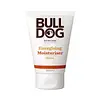What's inside
What's inside
 Key Ingredients
Key Ingredients

 Benefits
Benefits

 Concerns
Concerns

 Ingredients Side-by-side
Ingredients Side-by-side

Aloe Ferox Leaf Juice Extract
Skin ConditioningOctocrylene
UV AbsorberButyloctyl Salicylate
Skin ConditioningCaprylic/Capric Triglyceride
MaskingNiacinamide
SmoothingCetearyl Olivate
Cetyl Alcohol
EmollientEthylhexyl Salicylate
UV AbsorberWater
Skin ConditioningSorbitan Olivate
EmulsifyingSodium Hyaluronate
HumectantSilica
AbrasiveArgania Spinosa Kernel Oil
EmollientGlycerin
HumectantGlyceryl Stearate
EmollientPolyglyceryl-10 Laurate
Skin ConditioningPhenoxyethanol
PreservativeCaprylyl Glycol
EmollientDimethicone
EmollientPolyacrylate Crosspolymer-6
Emulsion StabilisingSodium Stearoyl Glutamate
CleansingEthyl Ferulate
AntioxidantEthylhexylglycerin
Skin ConditioningRicinus Communis Seed Oil
MaskingCocos Nucifera Oil
MaskingOpuntia Ficus-Indica Seed Oil
EmollientVitis Vinifera Seed Oil
EmollientAloe Ferox Leaf Juice Extract, Octocrylene, Butyloctyl Salicylate, Caprylic/Capric Triglyceride, Niacinamide, Cetearyl Olivate, Cetyl Alcohol, Ethylhexyl Salicylate, Water, Sorbitan Olivate, Sodium Hyaluronate, Silica, Argania Spinosa Kernel Oil, Glycerin, Glyceryl Stearate, Polyglyceryl-10 Laurate, Phenoxyethanol, Caprylyl Glycol, Dimethicone, Polyacrylate Crosspolymer-6, Sodium Stearoyl Glutamate, Ethyl Ferulate, Ethylhexylglycerin, Ricinus Communis Seed Oil, Cocos Nucifera Oil, Opuntia Ficus-Indica Seed Oil, Vitis Vinifera Seed Oil
Water
Skin ConditioningGlycerin
HumectantEthylhexyl Palmitate
EmollientC12-15 Alkyl Benzoate
AntimicrobialAcrylates/C10-30 Alkyl Acrylate Crosspolymer
Emulsion StabilisingWater, Glycerin, Ethylhexyl Palmitate, C12-15 Alkyl Benzoate, Acrylates/C10-30 Alkyl Acrylate Crosspolymer, Phenoxyethanol, Phytic Acid, Sodium Polyacrylate, Benzoic Acid, Caulerpa Lentillifera Extract, Glycogen, Parfum, Dehydroacetic Acid, Limonene, Sodium Benzoate, Citral, Citric Acid, Sodium Hydroxide
Ingredients Explained
These ingredients are found in both products.
Ingredients higher up in an ingredient list are typically present in a larger amount.
Glycerin is already naturally found in your skin. It helps moisturize and protect your skin.
A study from 2016 found glycerin to be more effective as a humectant than AHAs and hyaluronic acid.
As a humectant, it helps the skin stay hydrated by pulling moisture to your skin. The low molecular weight of glycerin allows it to pull moisture into the deeper layers of your skin.
Hydrated skin improves your skin barrier; Your skin barrier helps protect against irritants and bacteria.
Glycerin has also been found to have antimicrobial and antiviral properties. Due to these properties, glycerin is often used in wound and burn treatments.
In cosmetics, glycerin is usually derived from plants such as soybean or palm. However, it can also be sourced from animals, such as tallow or animal fat.
This ingredient is organic, colorless, odorless, and non-toxic.
Glycerin is the name for this ingredient in American English. British English uses Glycerol/Glycerine.
Learn more about GlycerinPhenoxyethanol is a preservative that has germicide, antimicrobial, and aromatic properties. Studies show that phenoxyethanol can prevent microbial growth. By itself, it has a scent that is similar to that of a rose.
It's often used in formulations along with Caprylyl Glycol to preserve the shelf life of products.
Water. It's the most common cosmetic ingredient of all. You'll usually see it at the top of ingredient lists, meaning that it makes up the largest part of the product.
So why is it so popular? Water most often acts as a solvent - this means that it helps dissolve other ingredients into the formulation.
You'll also recognize water as that liquid we all need to stay alive. If you see this, drink a glass of water. Stay hydrated!
Learn more about Water